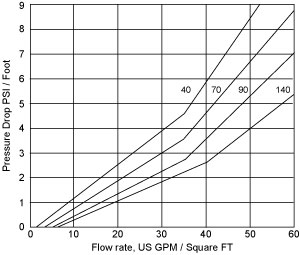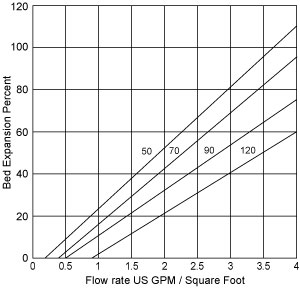ALDEX Strong Base Series
CRA Macroporous Strong Base Anion Exchange Resin – Acrylic
Aldex CRA is a strongly basic, type 1 anion built on a macroporous, cross-linked acrylic polymer matrix having quaternary ammonium functionality. The porous structure allows more efficient removal of large organic molecules using both adsorption and ion exchange properties to capture those contaminants. The acrylic polymer matrix allows for excellent adsorption and desorption of natural organics matter from surface water when regenerated with NaCl or an alkali solution. Aldex CRA is used in potable water applications to remove tannins or color bodies and may also be used as an organic scavenger in industrial systems. In nonwater installations, Aldex CRA may be used in series flow with styrenic macroporous resins to remove a broad spectrum of organic compounds found in sugar juices and cane syrups, citric acid purification and capturing metal complexes.
Aldex CRA Technical Bulletin: English (PDF) | Français (PDF)
Aldex CRA Safety Data Sheets: English (PDF) | Français (PDF)
Physical Chemical Properties
| Polymer Structure: | Macroporous polyacrylic crosslinked with divinylbenzene |
| Functional group: | Quaternary Ammonium |
| Ionic Form as Shipped: | Chloride |
| Physical Form: | Spherical beads |
| Particle Size: | 16 to 50 mesh |
| pH Range: | 0 to 14 |
| Moisture Content: | 66 to 72% |
| Shipping Weight: | 43 to 45 lbs per cubic foot |
| Total Capacity Cl- Form: | 0.8 eq/l |
| Specific Gravity: | 1.08 |
| Temperature Limit: Cl- Form OH- Form | 60°C 40°C |
Recommended Operating Conditions
| Maximum Temperature (Cl-): | 140°C |
| Bed Depth: | 30” minimum |
| Regenerant Strength: | 8% to 12% Sodium Chloride |
| Regenerant Flow Rate: | 0.3 to 0.5 US GPM per cubic foot |
| Regenerant Dosage Level: | 10 lbs per cubic foot minimum |
| Slow Rinse Volume: | 20 US GPM per cubic foot |
| Service Flow Rate: | 1 to 5 US GPM per cubic foot |
| Slow Rinse Flow Rate: | 0.3 to 0.5 US GPM per cubic foot |
| Fast Rinse Rate: | 2 to 5 US GPM per cubic foot |
| Fast Rinse Volume: | 30 US GPM per cubic foot |
| Inlet Water Limitations: Turbidity Free Chlorine | 1.0 ppm maximum 1.0 ppm maximum |
CRA Features
Very low color, taste or odor
Aldex CRA meets the requirements for paragraph 173.25 of the Food Additive Regulation of the U.S. Food and Drug Administration.
Long Life
Strong and durable beads ensure long service life.
Reliability
Aldex Chemical has over 40 years of field usage by thousands of customers demonstrating the reliability of Aldex ion exchange resins and other water treatment media.
Safety Information
A material safety data sheet is available for Aldex CRA. Copies can be obtained from Aldex Chemical Co., LTD. Aldex CRA is not a hazardous product and is not WHMIS controlled.
Caution: Acidic and basic regenerant solutions are corrosive and should be handled in a manner that will prevent eye and skin contact. Before using strong oxidizing agents in contact with ion exchange resin, consult sources knowledgeable in the handling of these materials.
Pressure Drop
The graph below shows the expected pressure loss per foot of bed depth as a function of flow rate at various temperatures.

Fig. 1 Pressure Drop vs Flow Rate at various degrees Fahrenheit (F°)
Backwash Characteristics
After each cycle, the resin bed should be backwashed at a rate that expands the bed 50 to 75 percent. This will remove any foreign matter and reclassify the bed. Fig. 2 shows the expansion characteristics of Aldex CRA in the chloride form.

Fig. 2 Bed Expansion vs Flow Rate at various degrees Fahrenheit (F°)
Applications
Aldex CRA should be regenerated with 10% sodium chloride at a minimum of 10 lbs NaCl per cubic foot. If the color bleeds after regeneration either the frequency or the salt level should be increased.
Once the tannins have been adsorbed on the resin and the resin has been exhausted, it should be regenerated as soon as possible. This prevents the tannins from permanently fouling the resin. Aldex CRA should be regenerated prior to vacation periods or seasonal shutdown.
Aldex CRA can be used on waters with moderate hardness, 5 to 10 grains/USG depending upon the sulfate and carbonate concentrations. Higher hardness waters require a softener prior to the tannin removal step.
On low hardness waters Aldex CRA can be layered above the cation resin in a conventional water softener.